Both Milan and Internazionale demonstrated their dominance at the beginning of the season, although they had some difficulties in certain aspects of their game that stopped them from earning the full package of points from their first four games.
The teams are currently sitting sixth and third in Serie A respectively, which increases the importance of the upcoming Derby della Madonnina. Winning the game is not only a matter of pride but also a crucial step towards their goal, the Scudetto. Atalanta are in the leading spot after the first four rounds and this will be Inter’s chance to bypass them.
Stefano Pioli’s side haven’t been as convincing in attack as last term, while their opponents have dropped their efficiency in defence.
While the Nerazzurri have been dominant against Lecce, Spezia and Cremonese, they got tested against Lazio, who took advantage of their defensive lapses. Inter might have difficulties in keeping a clean sheet against Milan’s skilful attacking players as well, despite some of Rossoneri’s regular starters being doubtful due to injuries.
Apart from clearing out the mistakes from their past performances, both managers need to re-organise their teams due to the absence of some of their key players, which makes the outcome of the game even more unpredictable.
In this preview, we use tactical analysis to explain how Milan can continue their unbeaten run and how Inter can threaten it.
Predicted formations and starting XI’s
Stefano Pioli is expected to stick to his favoured 4-2-3-1 formation. However, with some of his most experienced players like Alessandro Florenzi and Ante Rebić being doubtful, he might be forced to change the starting eleven.
While Mike Maignan’s goalkeeping spot is secured, the manager will have to decide between Pierre Kalulu and Simon Kjær for the central defence. Despite the former captain’s experience and composure, his younger replacement seems like a better fit against Inter’s pacey attack. His partnership with Fikayo Tomori has proven successful so far, although the 22-year-old was dropped from the squad in the last fixture against Sassuolo in favour of Kjær who is valued for his leadership qualities and defensive contribution, rather than his actions in possession.
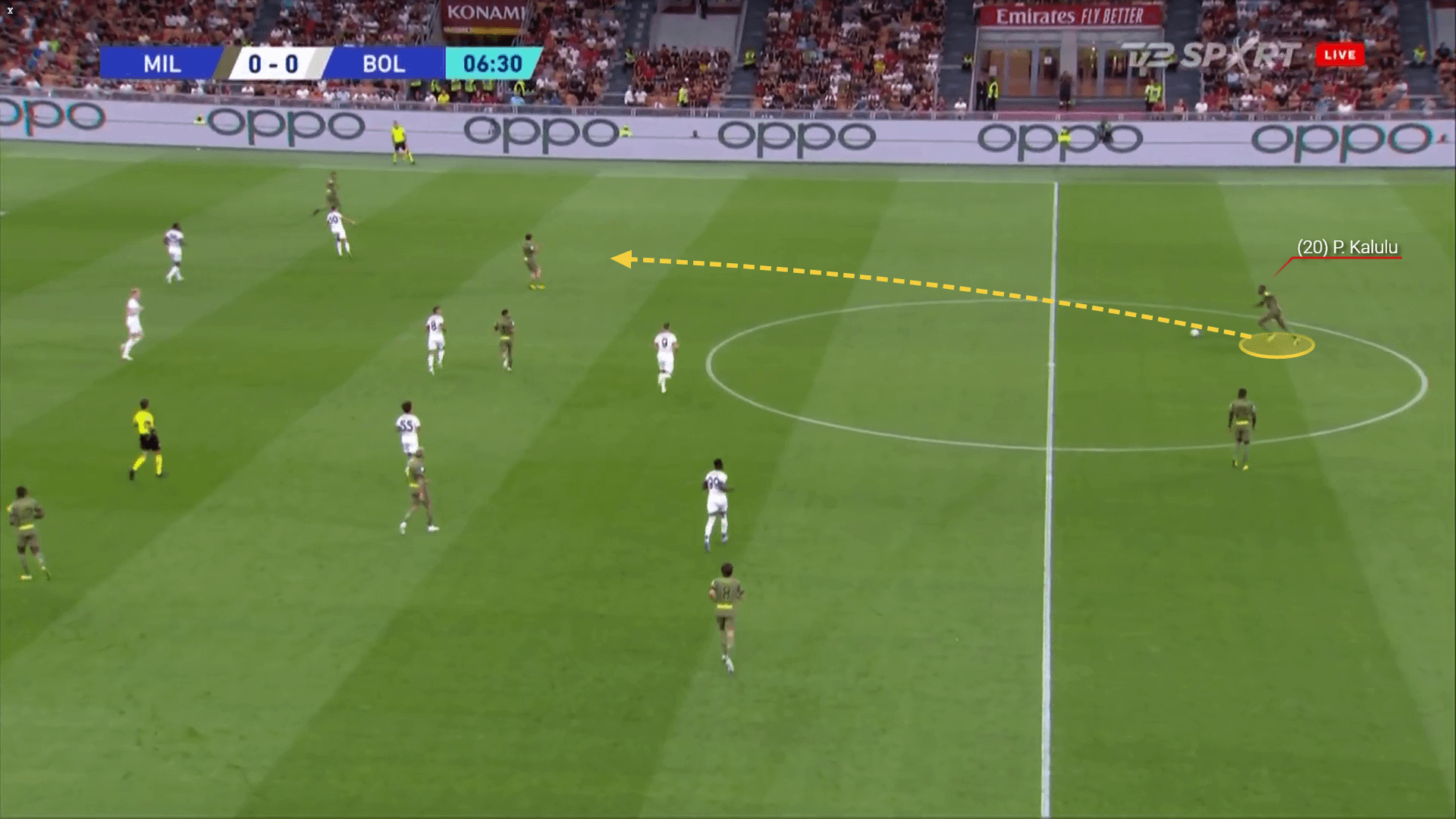
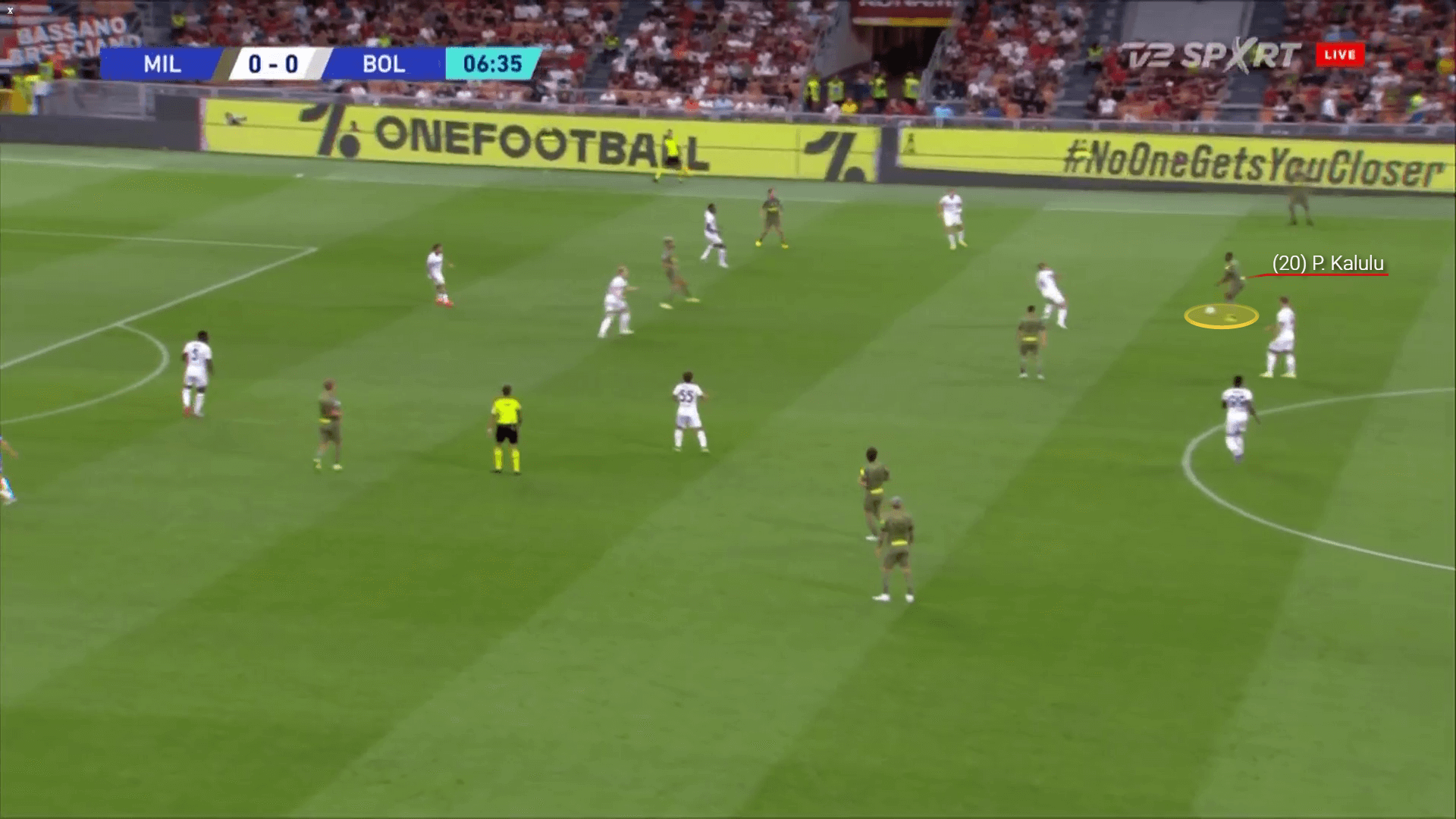
Theo Hernández will be starting on the left, being expected to contribute actively to the attacking actions. In contrast, Davide Calabria is expected to be relied on in the right-back position.
The midfield is expected to be formed by Ismaël Bennacer and Sandro Tonali who have both been key for the team since the beginning of the season. Bennacer’s actions have helped the team in possession, while Tonali’s pressing efforts have been crucial without the ball.
Rafael Leão’s spot on the left side of the attack is secured, but Pioli has a tough choice for the rest of the attack. He is expected to rely on more skilful players who can outplay the opposition through their technical abilities, leading to the choice of Brahim Díaz and Junior Messias.
In the absence of Zlatan Ibrahimović and Rebić, the manager will have to rely on Olivier Giroud, who can take advantage of the opposition in the air and expose the gaps left by them through his smart positioning.
Simone Inzaghi’s problems begin with Romelu Lukaku’s injury, which is expected to keep him sidelined for the game. This means that Edin Džeko might get his chance in the starting XI next to Lautaro Martínez in a 3-5-2 formation. The manager has Joaquin Correa as an option upfront as well, however, Džeko’s aerial abilities and presence in the box might be more useful for the team if they want to expose the opposition from set-pieces or focus on crossing.
Nicolò Barella and Hakan Çalhanoğlu are expected to start behind them, although Henrikh Mkhitaryan is now recovered from his injury and might be considered in the attacking midfield as well. Federico Dimarco is the contender for the left wing-back position, because of his tendency to actively support the attacking actions. Denzel Dumfries will be strolling in as the right-wing-back. His attacking contribution has been crucial since the start of the season, as he not only helps with ball progression and supplies the attackers through his crossing, but also occasionally cuts inside and provides more options in and around the box.
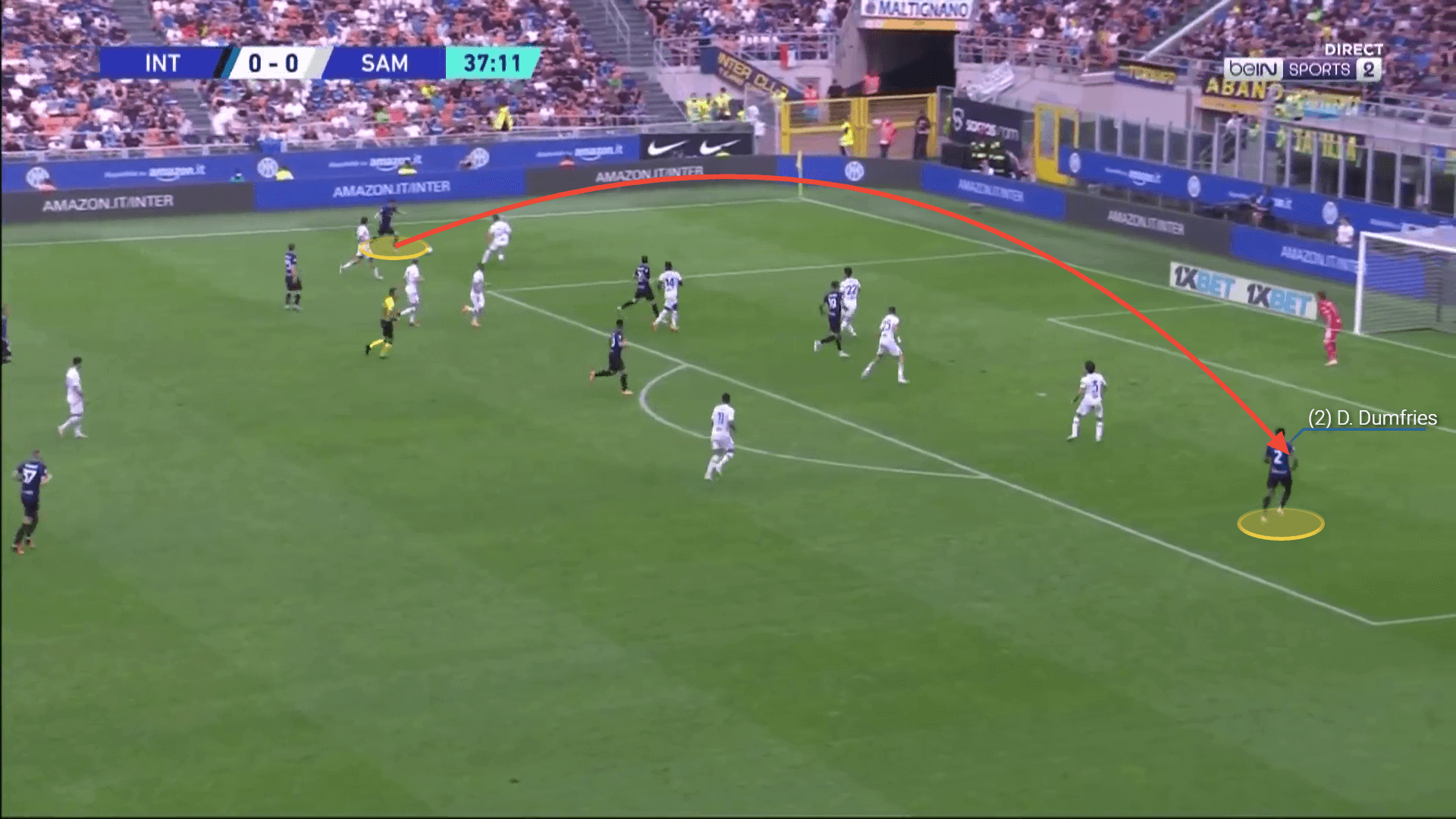
Marcelo Brozović is the irreplaceable option in defensive midfield who is expected to orchestrate play. In defence, Inzaghi is expected to rely on Alessandro Bastoni, Stefan de Vrij and Milan Škriniar, despite them lacking concentration in certain moments which can cost them a lot.
Inter’s counter-attacking actions could be key
The Nerazzurri might need to focus on their counter-attacking actions if they want to gain an advantage. The team are actively trying to expose their opponents on a counterattack, averaging 3.25 counter-attacks per 90 minutes, which is an option against Milan as well, as long as they don’t overcommit to high pressing.
Their strategy of stealing the ball from the opposition and exposing them on speed might be successful against Milan due to the Rossoneri’s considerably high positioning, with their full-backs staying close to the central line and their central defenders right behind it.
Milan usually try to control the game in the opposition half which could lead to them being exposed on a counter should they lose possession. That’s why it is important for Pioli to have defensive players who can quickly respond and have the needed speed to drop back quickly. It is expected, though, that the Rossoneri won’t be that adventurous in this game and might be keeping the distance at the back a little shorter than usual.
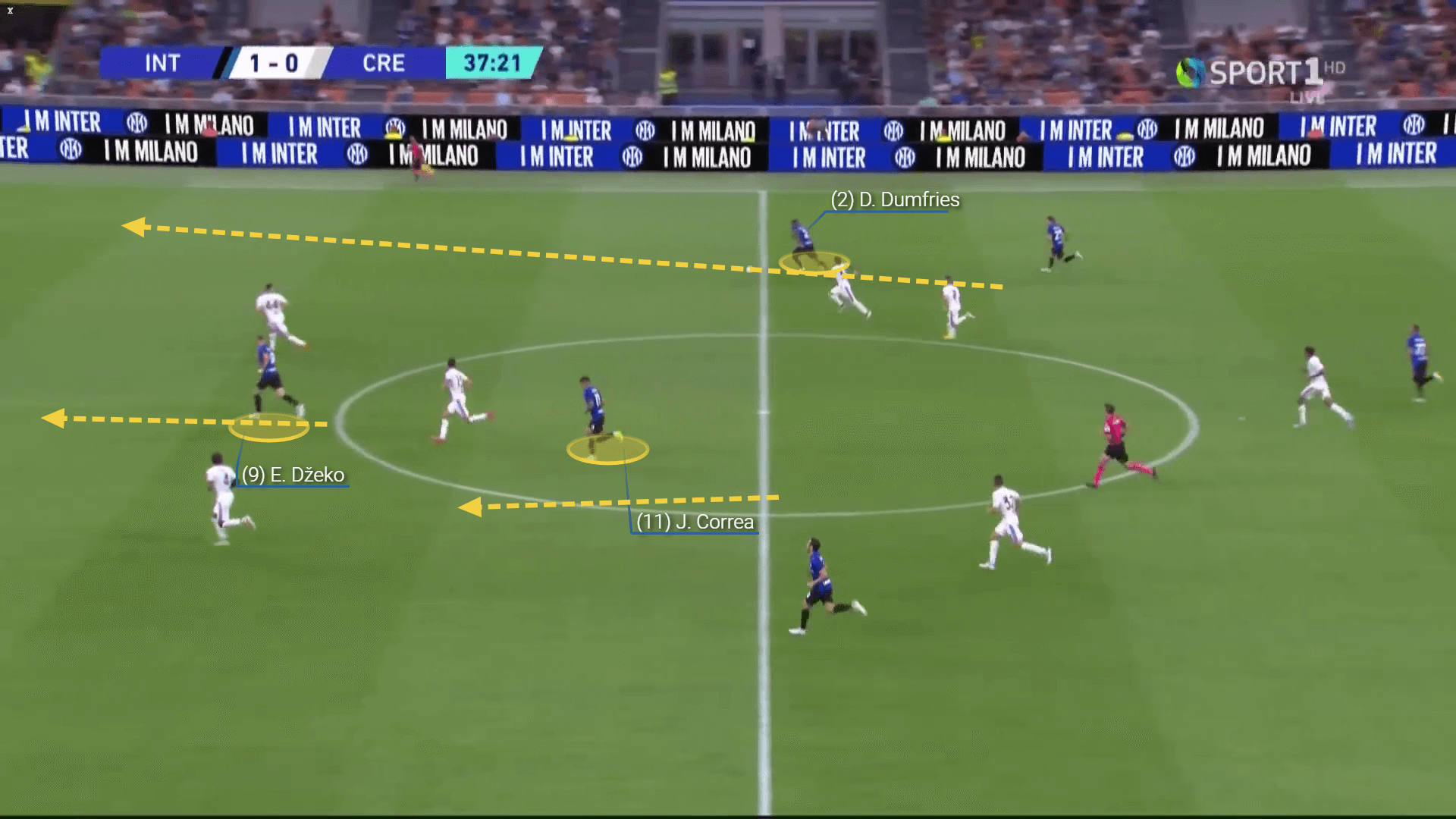
Inter can rely on players like Martínez and Dumfries who can quickly carry the ball to the advanced areas and create opportunities. The threat to the goal increases thanks to Çalhanoğlu’s ability to shoot from distance, which can be useful in cases where Milan’s defence manage to drop in a timely manner and block the passing lanes.
Brozović’s ability to distribute the ball to quality areas could also be used.
Milan need to be creative in attack
Pioli’s side need to increase their creativity in attack and use a lot of movement against Inter’s experienced defence. Players like Leão and Messias need to rely on their individual skills and focus on winning their 1vs1 situations through their technical abilities and dribbling if they want to create chances. Their constant pressure might force the opposing players into mistakes, which can be beneficial for the team for winning set-piece opportunities.
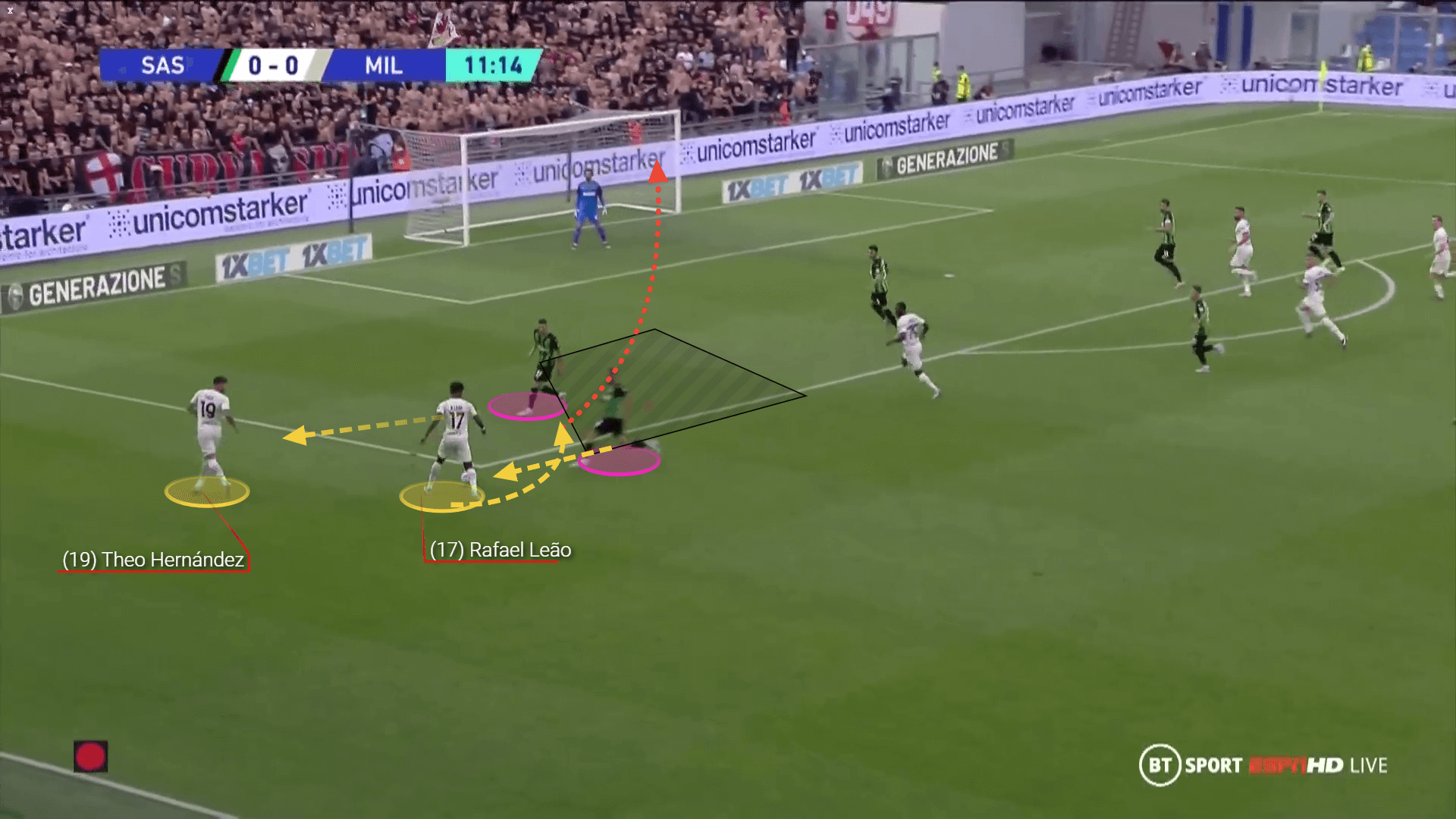
Inter have been more vulnerable on the right, due to Dumfries’ advanced position, which often leaves the centre-backs responsible for covering the flanks. This could be a problem against Leão as he can easily take on his opponents and exploit any gaps that have formed due to their commitment in the wide areas. Giroud’s off-the-ball movement also hides a threat his teammate could engage defenders out and then distribute the ball to the Frenchman centrally.
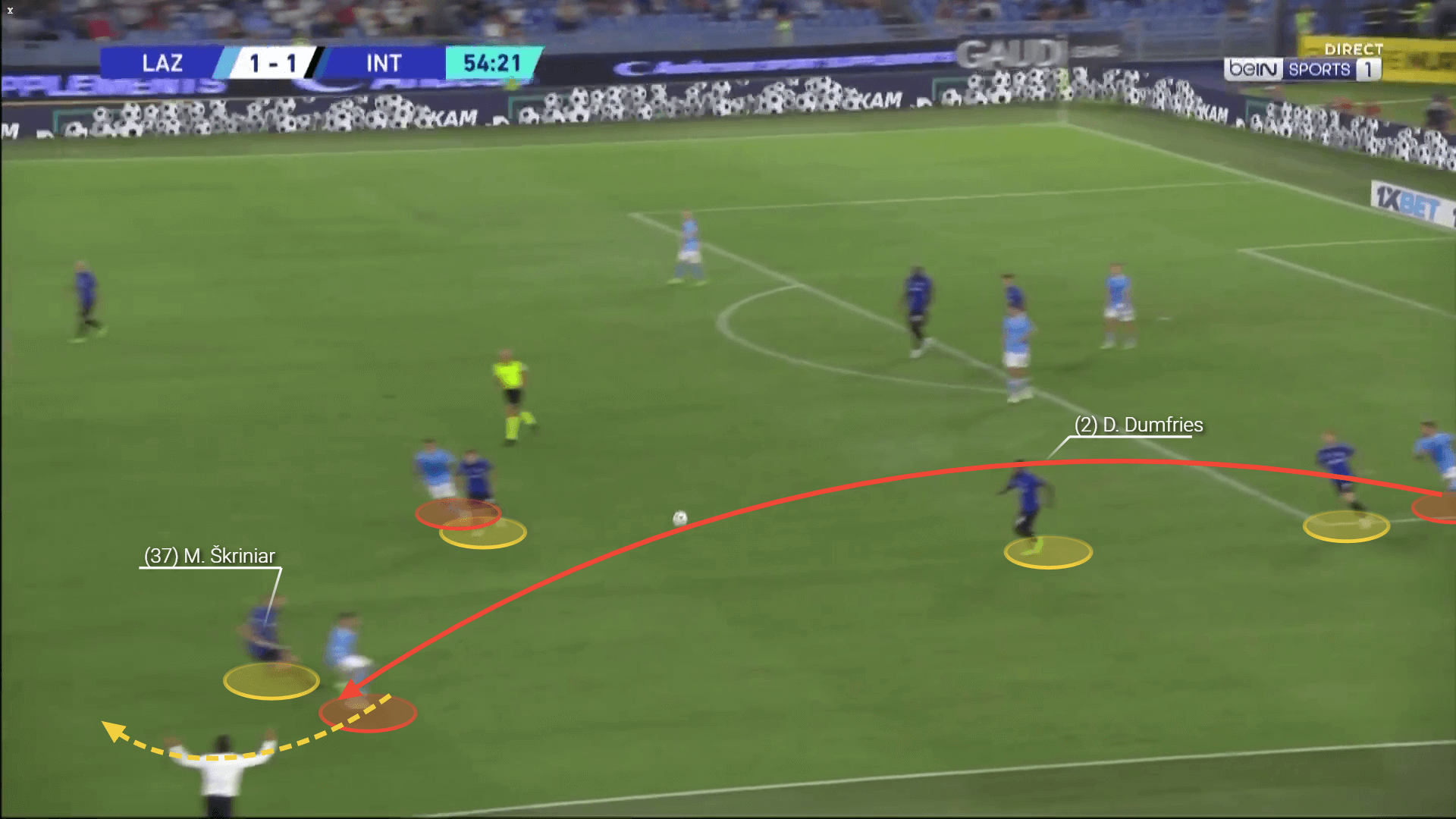
The biggest threat on the right might come from Hernández who frequently cuts inside and switches positions with Leão. If Inter overcommit to Leão’s coverage, they risk leaving space for the left-back to move into. Since the start of the season, the Rossoneri also often rely on shots from distance in their efforts to score. This is a smart backup option even if the opposition drop in a low block, and it is difficult for the players to move between the lines and connect with each other as Hernández and Bennacer can expose the opposition through their positioning and smart runs.
Conclusion
While in our analysis we have explained what are the best options for both teams, it will be interesting to see the managers’ tactics and how they will approach the derby. Are they going to go all out or will they be more cautious in their actions? The only sure thing is that it will be a game of tactical outwitting and the teams need to be convincing to be able to grab the three points.






Comments